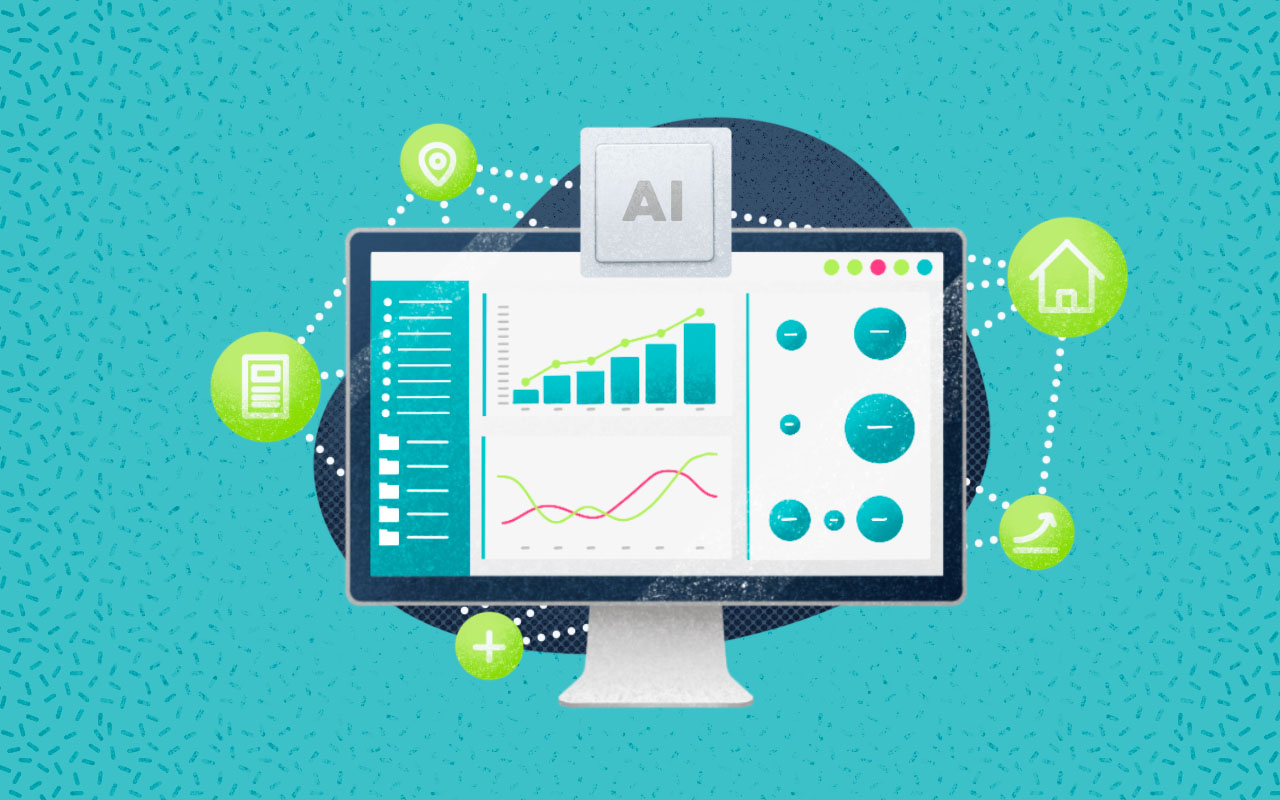Introdução
A Gestão de Ativos é um elemento fundamental na maturidade digital de uma empresa. É um processo estratégico que permite às empresas monitorizar, otimizar e melhorar os seus recursos, tangíveis e intangíveis. Desde a gestão de infraestrutura de IT até aos investimentos financeiros, o principal objetivo é maximizar o valor dos ativos, minimizando riscos e custos operacionais.
Abordámos este tema num artigo anterior Práticas Recomendadas de Gestão de Ativos de IT, com foco especial nas práticas mais atualizadas; recomendamos a consulta desse artigo para todos os detalhes.
Abaixo, no entanto, queremos centrar-nos num aspeto específico: automatização e Inteligência Artificial.
No contexto económico e tecnológico continuamente em evolução no qual estamos imersos, o papel da AI na gestão de ativos já é central… e irá tornar-se cada vez mais importante. As promessas são de uma transformação radical deste setor, que se traduz (e se traduzirá) numa maior eficiência e precisão, na transição completa de uma abordagem reativa para proativa, bem como em capacidades preditivas sem precedentes.
Neste artigo, portanto, vamos analisar alguns casos de uso concretos e veremos quais são as principais diretrizes para aplicar esta revolução ao seu próprio negócio, da forma mais sensata e funcional para os seus objetivos.
O Desenvolvimento da AI e o seu Impacto na Gestão de Ativos
Ao falar de Inteligência Artificial, é preciso manter os sentidos bem alertas; antes de tudo, para distinguir o que é uma “palavra da moda” ou slogan do que já é concreto e operacional… porque já existe muita coisa que é concreta e operacional.
Todos sabemos: nos últimos anos, a Inteligência Artificial deu passos significativos, especialmente com o advento da AI generativa (Gen AI). Num curto espaço de tempo, avançou a passos de gigantes, algo que poucos teriam sido capazes de imaginar. E esses passos parecem ser apenas os primeiros de uma longa jornada.
A adoção de AI na gestão de ativos, em particular, tornou-se uma alavanca estratégica para empresas que desejam otimizar o ciclo de vida dos recursos, melhorar a manutenção preditiva e apoiar decisões de investimento cada vez mais precisas.
Em suma, a AI já não está limitada a algoritmos de “simples” análise de dados, mas evolui continuamente, com modelos e sistemas de automatização capazes de aprender e melhorar ao longo do tempo.
Abaixo, como prometido, vamos explorar alguns casos de uso típicos e interessantes de AI na gestão de ativos. Seremos muito concretos e apresentaremos exemplos operacionais, extraídos de diferentes setores produtivos.
AI na Gestão de Ativos – Alguns Casos de Uso
Falar de AI na gestão de ativos significa abordar um campo muito amplo, que se expande a cada dia. Significa – ao olhar para o presente – analisar os impactos e consequências num grande número de áreas; e – ao olhar para o futuro – fazer um exercício de imaginação para perceber que outros aspetos serão afetados. E talvez entendê-lo antes dos outros, para agir com antecedência e ganhar uma vantagem competitiva.
Mas prometemos ser concretos; então, abaixo, fornecemos uma lista dividida em quatro pontos, com a intenção de mapear os casos de uso atuais de AI na gestão de ativos, com exemplos específicos.
1. Monitorização, Manutenção e Análise Preditiva
Vamos começar com um ponto absolutamente crucial. Os sistemas de Inteligência Artificial permitem a recolha e análise de enormes quantidades de dados de sensores, dispositivos IoT e software de gestão. Em suma, trata-se de dados. E estes dados estão em constante expansão. É por isso que se diz, com frequência, que são o verdadeiro ativo de uma empresa contemporânea.
E como é que este ativo é transformado em processos operacionais relacionados à gestão de ativos? De muitas maneiras, começando – precisamente – pela monitorização. Graças aos modelos de aprendizagem automática, as empresas podem identificar padrões e anomalias que poderiam indicar o desgaste de um ativo. E agir de acordo, com uma perspetiva proativa. Por exemplo, no setor industrial, a AI pode prever falhas em máquinas críticas, sugerindo intervenções de manutenção antes que ocorra uma interrupção problemática na produção. Sejamos ainda mais concretos. Pense no setor de energia. Um bom sistema de Inteligência Artificial poderia ajudar a monitorizar a condição de turbinas eólicas ou sistemas fotovoltaicos, sugerindo manutenção com base no desgaste real, em vez de intervalos de tempo simplesmente predeterminados.
Esta abordagem aumenta a continuidade operacional, reduz os custos de reparação, melhora a produtividade e a qualidade da experiência no local de trabalho. Tudo de uma só vez.
2. Automatização de Gestão de Documentos
Neste segundo ponto, focamo-nos num aspeto mais específico, mas não menos importante. Sabemos bem que um dos aspetos mais críticos na gestão de ativos é a documentação: um processo que ainda hoje pode ser um fardo para a produtividade da empresa; e que, além disso, se não for bem gerido, pode transformar-se num bumerangue altamente perigoso.
A Inteligência Artificial pode representar uma mudança decisiva também neste campo.
Graças à AI, é possível automatizar a catalogação e recuperação de documentos associados a ativos, reduzindo o tempo necessário para encontrar informações críticas. Alguns exemplos? Basta pensar nos setores de seguros e imobiliário. A implementação de um bom sistema de AI pode extrair automaticamente dados de contratos e certificados de propriedade, acelerando processos de verificação e conformidade. Mas o mesmo mecanismo pode ser aplicado em qualquer tipo de empresa, para tudo o que diga respeito a dispositivos ou softwares em uso. E isto leva-nos diretamente ao próximo ponto.
3. Melhoria da Segurança e Conformidade
A multiplicação dos ativos digitais de uma empresa também significa multiplicação de possíveis pontos de ataque para quem tem intenções maliciosas. E isso nunca deve ser esquecido.
A Inteligência Artificial desempenha um papel crucial na segurança dos ativos, físicos e digitais. Algoritmos de cibersegurança podem detetar acessos suspeitos ou anomalias em sistemas de IT, prevenindo ataques cibernéticos. Além disso, há toda uma vertente relacionada com o controlo de acessos seguros aos ativos.
Um exemplo prático? Nos setores da indústria e da logística, a AI já está a ser utilizada para monitorizar a segurança de plantas através de sistemas de visão artificial e reconhecimento facial, garantindo que apenas pessoal autorizado tenha acesso a áreas sensíveis.
Mais uma vez, esta dinâmica pode ser aplicada a qualquer tipo de empresa, mesmo que seja apenas para acesso a dispositivos comuns da empresa.
Atenção! Não se trata apenas de segurança. Há também o aspeto relacionado à conformidade, que é muito delicado e está em constante atualização.
4. Gestão de Ativos Financeiros
Vamos mudar completamente de direção neste último ponto da nossa lista. Atualmente, os sistemas de Inteligência Artificial também são utilizados para analisar o valor e o desempenho dos ativos financeiros de uma empresa.
Algoritmos de aprendizagem profunda podem processar dados de mercado, informações económicas globais, análises históricas e testes retroativos para sugerir as estratégias de investimento mais lucrativas, ajustadas aos objetivos da empresa e ao seu perfil de risco.
Estes sistemas já se tornaram essenciais para a gestão de fundos de investimento e apoiam estavelmente analistas humanos; mas são cada vez mais difundidos em quase todos os setores industriais, onde existem empresas que investem o seu capital nos mercados.
Como Utilizar Melhor a AI na Gestão de Ativos
Agora, antes de concluir o artigo, aqui está um foco ainda mais prático e operacional. A implementação eficaz da AI na gestão de ativos requer uma estratégia bem definida e uma infraestrutura tecnológica adequada. Não existe uma receita milagrosa universal; depende muito do tipo de empresa, dos seus objetivos, do contexto em que está inserida e do tipo de pessoas que a compõem. No entanto, há alguns passos fundamentais para maximizar benefícios que se aplicam a todos. São estes que incluímos na lista abaixo:
- Definir objetivos claros: Antes de implementar qualquer sistema de Inteligência Artificial, é essencial fazer uma “autoanalise”. Traduzindo: estabelecer que aspetos da gestão de ativos quer melhorar, com que objetivos, em que prazos.
- Recolher e estruturar dados: A Inteligência Artificial não é algo “mágico”; mas é um sistema extremamente complexo baseado em algo elementar: dados. Ter uma infraestrutura eficaz de recolha e análise de dados, consequentemente, é o pré-requisito essencial.
- Escolher as ferramentas certas: Existem várias soluções de AI na gestão de ativos, desde plataformas de análise avançada até modelos personalizados de aprendizagem automática. Trata-se de escolher as mais adequadas. Descubra mais sobre o EV Service Manager
- Integrar a AI nos processos de negócios: A adoção da AI não deve “cair do céu”, mas deve ser integrada nos fluxos de trabalho existentes para garantir continuidade operacional e melhorar a eficiência.
- O fator humano continua essencial: Preste atenção a este ponto: não cometa o erro de pensar que a AI pode substituir as pessoas que trabalham na empresa… elas continuam a ser ativos muito preciosos e devem ser envolvidas na evolução tecnológica, com comunicações claras e formação contínua.
- Monitorizar e otimizar continuamente: A AI deve ser constantemente atualizada e monitorizada para garantir que continua a produzir valor ao longo do tempo. A verdadeira revolução, neste sentido, é a de melhoria contínua.

